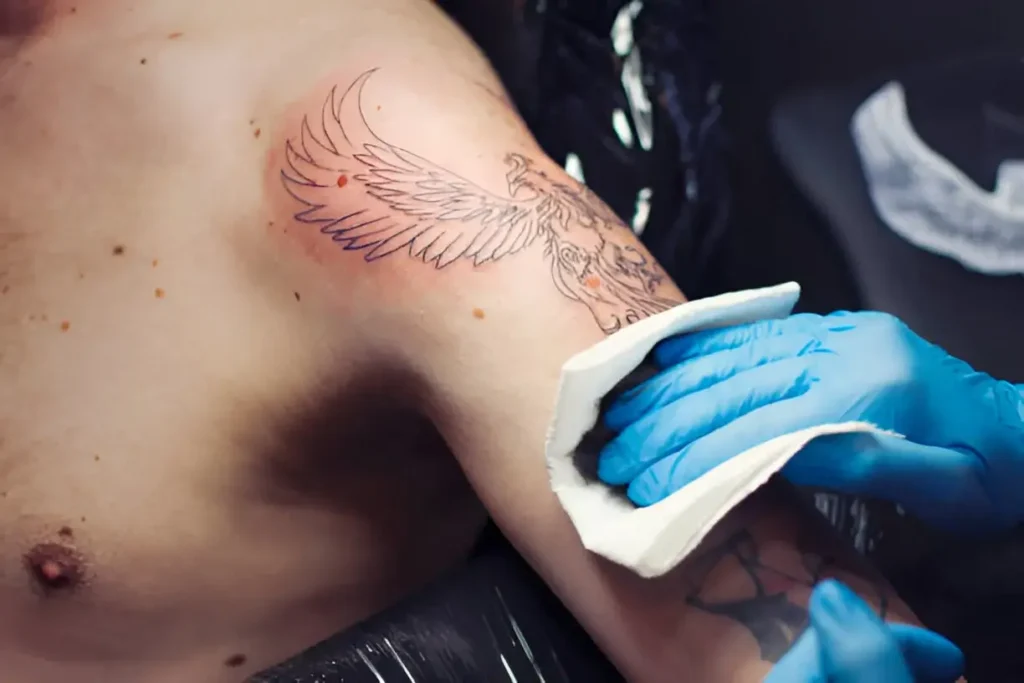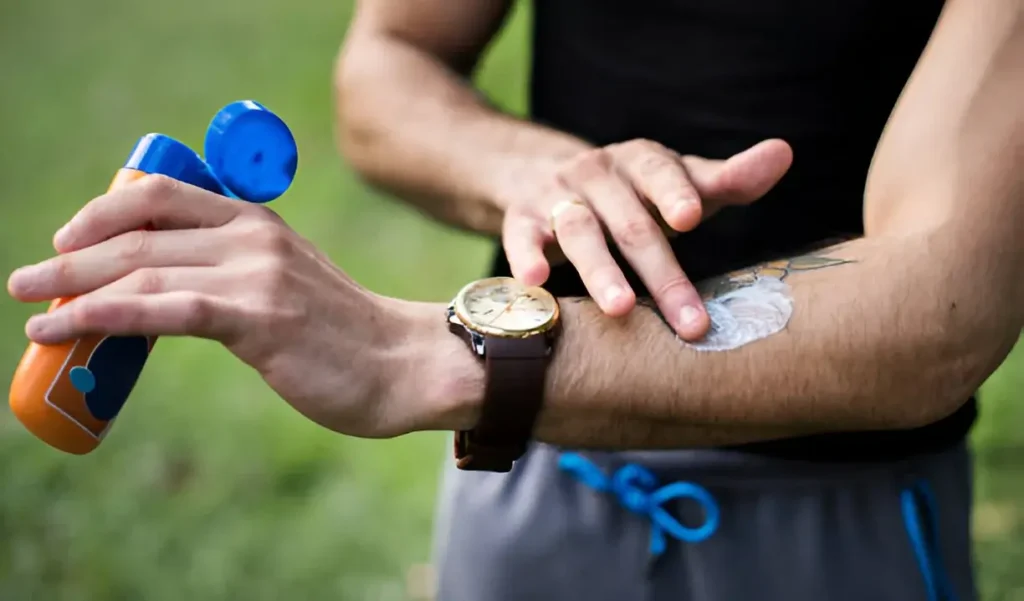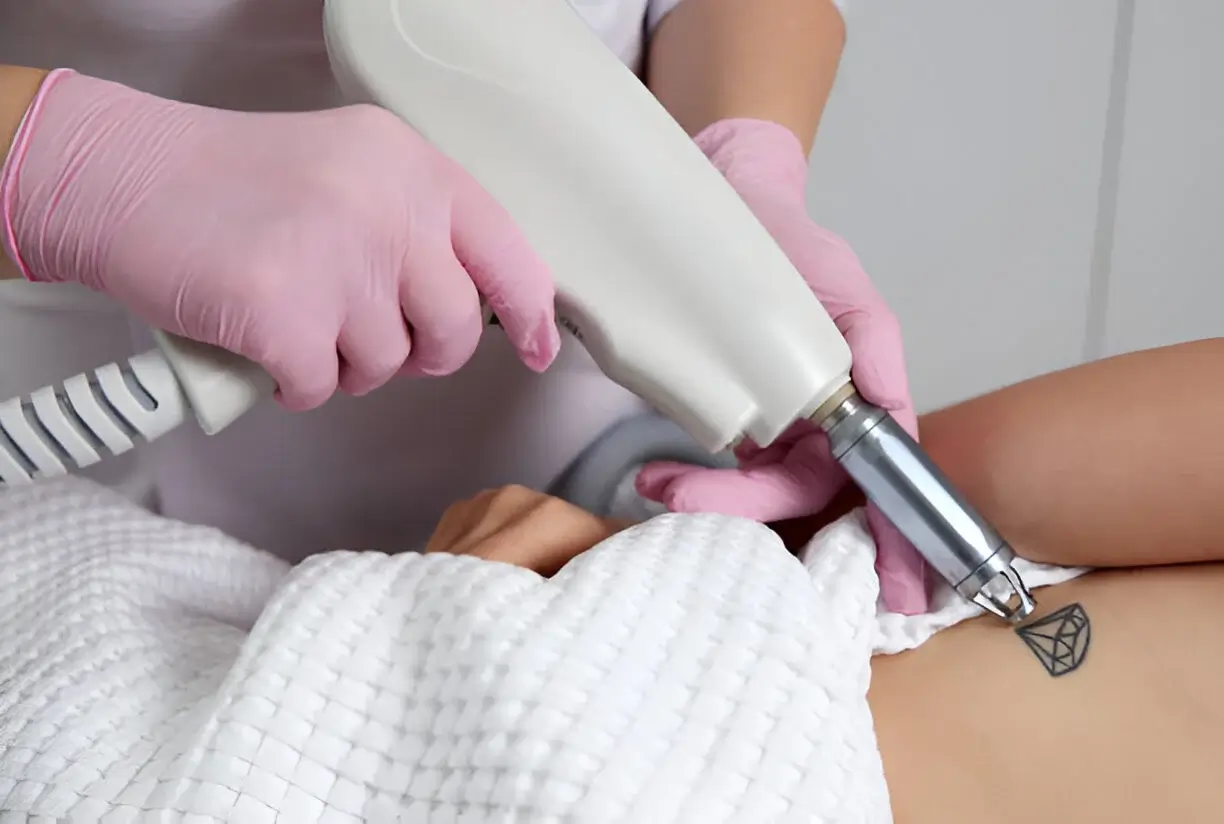The removal of tattoos is not a one-and-done process. You can remove tattoos with lasers if you’ve outgrown them or if they don’t turn out as expected. But “how long does tattoo removal take?” The answer is based on different factors, including the size, colour, and location of the tattoo, the technology used, and your body’s healing response. The tattoo removal process can take 6 months to a year, depending on your unique circumstances, but it can take longer or shorter.
Tattoo ReHow Long Does Tattoo Removal Take?: What to Expect
Each session of tattoo removal is relatively fast, normally lasting between 15 and 30 minutes, but it depends on the tattoo’s size and complexity. The laser pulses quickly, breaking down the ink into tiny particles that your immune system gradually removes.
A laser session may take only a few minutes to perform in theory, but you may have to follow aftercare instructions as well. The number of sessions required is different for everyone, but you need to expect to schedule multiple appointments for full removal.
Time Required for Complete Tattoo Removal
The number of sessions may need to be increased if the tattoo is large or stubborn. Small black tattoos usually require 5 sessions, while large, multicoloured tattoos may require more than 10. It is important to wait a certain amount of time after each session to allow the body to expel the ink particles. There is no guarantee that the process will be completed within the expected timeframe, as it may take up to a year for some people.

How Many Sessions for Tattoo Removal Are Needed?
Different factors play an important role in the tattoo removal process and the number of sessions also depends on them.
- Tattoo Size: The small size of the tattoo normally takes a few sessions.
- Tattoo Color: Black ink is removed more easily than coloured ink, while green and blue ink are more resistant.
- Tattoo Age: Older tattoos fade more quickly than newer ones.
- Skin Tone: More sessions are required because the laser intensity is lower for darker skin tones.
Tattoos normally require 6 to 10 sessions, but some may need more depending on the level of complexity.
Laser Tattoo Removal Recovery Time: Healing Between Sessions
Recovery after a tattoo removal session is a basic part of the process. People recover from laser tattoo removal in different ways, but normally, the treated area will be red, swollen, and may blister for a few days. These side effects are common, and proper aftercare like cleaning the area perfectly, moisturizing it, and protecting it from the sun can help speed up healing. It is important to allow your skin to fully recover between laser treatments so it can be ready for the next treatment when it is ready. For best results, an interval of 6 to 8 weeks is recommended between sessions.
Must Read This: Can Laser Tattoo Removal Leave Scars?
Factors Affecting Tattoo Removal Time: What You Need to Know
Different factors determine how long the tattoo removal process will take:
- Tattoo Depth: Complex and deeper tattoos need more sessions.
- Tattoo Color and Type of Ink: Colors like black are removed more quickly, while coloured inks like yellow, green, and blue take longer to remove.
- Skin Type: Lighter skin tones normally see quicker results, whereas darker skin tones may need more sessions.
- Immune System: Ink particles are flushed out by the immune system after being broken down, which speeds up the process.
Because of these variables, your tattoo removal experience will be unique.
Tattoo Removal Timeline by Size: Small, Medium, and Large Tattoos
- Small Tattoos: Removal of small tattoos, including wrists or fingers, can take as little as 4 to 5 sessions, often completed in a few months.
- Medium Tattoos: It takes about 6 to 8 sessions to tattoo a medium-sized area (such as the forearm or ankle), spread out for 8 to 12 months.
- Large Tattoos: More than 10 sessions and over a year may be needed to remove large tattoos, such as the back or full sleeve.
Tattoo Removal Creams
Using tattoo removal creams regularly can remove tattoos. The main purpose of the cream is to lighten or break down the ink on the skin. These creams commonly contain chemicals that help to lighten or break down the ink. Tattoo removal creams have also been proven to be more affordable and less invasive than some other methods. However, the impact of tattoo removal creams is still very much debated. Can creams remove tattoos quickly?

Session Count: Variable, often inconclusive
The use of tattoo removal creams normally needs the daily application to last for months or even years. Because the effectiveness of these creams differs greatly between individuals and tattoos, it is difficult to determine how many sessions are required for them to show any effect. Tattoo removal creams are often reported to provide minimal or no visible improvements, although some people may notice slight fading.
FDA regulations on tattoo removal creams are not in place, and clinical studies have not been conducted on their safety and effectiveness. Certain creams can cause skin irritation, burns, and other side effects.
How Fast Does Tattoo Removal Work for Different Tattoo Colors?
Colour of the tattoo plays a basic role in the removal timeline. Removing the black ink is easier because it absorbs all the laser wavelengths. It takes more sessions to completely remove the green and blue inks due to their resistance. Inks that are red or blue respond well, but yellow or white inks tend to resist absorption due to their reflective properties. There may be a difference in fade speed between different areas of your tattoo due to the variance in ink colours.
Tattoo Removal Healing Process
Once the tattoo removal session is complete, you need to expect the tattoo area skin to experience swelling, redness, and blistering. It is a sign of the right direction of the healing process. It is recommended that you allow scabs to heal naturally to prevent scarring. To ensure a perfect result, strictly follow the proper guidelines. After a session, the skin generally heals for about 4 to 6 weeks. Taking good care of yourself after surgery can help prevent complications, such as infection or a prolonged recovery.
How Long Between Tattoo Removal Sessions?
Ideally, you should wait 6 to 8 weeks between sessions so that your body can flush out any remaining ink particles and your skin can heal. Scheduling a removal session too closely or rushing the process will be the reason of skin damage or ineffective results. Patience is the key. Even though scheduling sessions more frequently may seem appealing, giving your body the time to heal will ensure better results.
Tattoo Removal Results Time Frame
It is normally possible to see results after the second or third session, but lighter tattoos may show results sooner. Each tattoo session will gradually fade, and the final result depends on its size, color, and your body’s response. Fading starts within the first few months for most people, but it can take up to a year or more for it to completely disappear.
Final Thoughts
Tattoo removal is a process that requires time, patience, and commitment. Depending on how your tattoo looks and how fast your body heals, the healing process may take a few months to more than a year. I hope now you will understand the different factors that influence removal time, such as the size of the tattoo, color, skin type, and aftercare, so you can better plan for the journey ahead.
This guide is helpful for those people who want to remove their tattoos with laser removal machines. Here you know the healing time, ensuring that you have realistic expectations about how long tattoo removal takes.


2 thoughts on “How Long Does Tattoo Removal Take?”